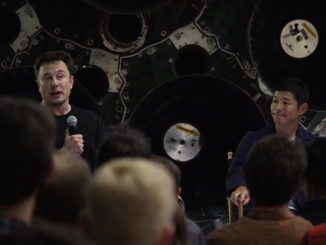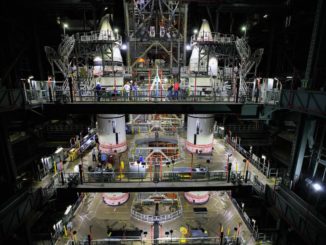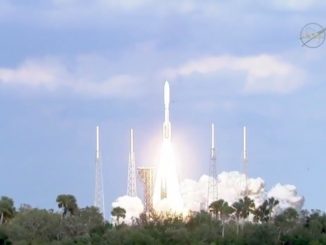EDITOR’S NOTE: Updated Dec. 2 with further confirmation, and details about the Roadster’s target orbit.

SpaceX founder and chief executive Elon Musk tweeted Friday that his red Tesla Roadster will head for deep space on the maiden flight of the company’s Falcon Heavy rocket as soon as next month, and do it to the tune of David Bowie’s “Space Oddity.”
But it won’t make the trip on battery power.
SpaceX’s Falcon rockets burn hydrocarbons for fuel, consuming a grade of highly refined kerosene called RP-1. The rockets’ Merlin engines burn the RP-1 kerosene mixed with super-cold liquid oxygen.
Musk tweeted Friday night that the Falcon Heavy’s first test flight, scheduled to blast off from Florida’s Space Coast next month, will have his midnight cherry Tesla Roadster on-board.
The Falcon Heavy’s “payload will be my midnight cherry Tesla Roadster playing Space Oddity,” Musk tweeted. “Destination is Mars orbit.”
The repurposed car “will be in deep space for a billion years or so if it doesn’t blow up on ascent,” he wrote.
Musk’s Twitter followers weren’t sure whether to take him seriously.
“The great part about @elonmusk is that I’m not sure if this is a joke or for real,” tweeted @MikeCharlieGolf.
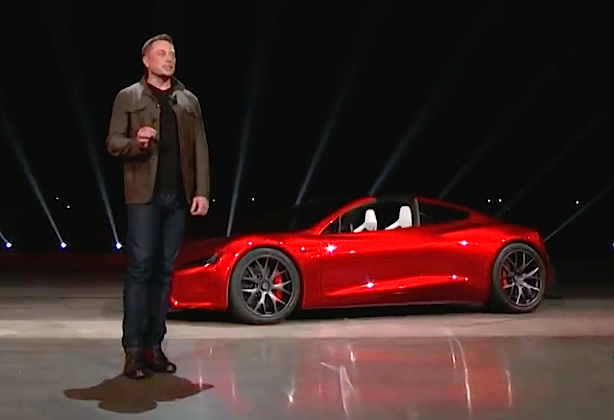
“Just to reiterate, the payload for the first Falcon Heavy rocket will be a Tesla electric car, playing Space Oditty, heading for Mars,” wrote @JC_Channel.
Apparently confirming his own tweet, Musk replied simply: “Yes.”
Joy Dunn, a SpaceX engineer, tweeted: “Falcon Heavy payload has been announced! This is going to be awesome!” She later clarified that the plan was real, writing: “Oh this is legit and of course there will be cameras!”
A third SpaceX official confirmed to Spaceflight Now on Saturday that “the Roadster to Mars payload is real.”
“I love the thought of a car drifting apparently endlessly through space and perhaps being discovered by an alien race millions of years in the future,” Musk tweeted Saturday.
The payload and destination for SpaceX’s first Falcon Heavy launch has been the subject of speculation.
Musk told reporters in March that SpaceX would put “the silliest thing we can imagine” on the first Falcon Heavy flight. The company placed a wheel of cheese on the first flight of its Dragon cargo craft in an ode to the Monty Python comedy group.
The Tesla Roadster weighs about 2,760 pounds (1,250 kilograms), measures nearly 13 feet (3.9 meters) long and spans about 5.7 feet (1.7 meters) wide, according to Car and Driver magazine. That’s well within the Falcon Heavy’s lift capability to go to Mars.
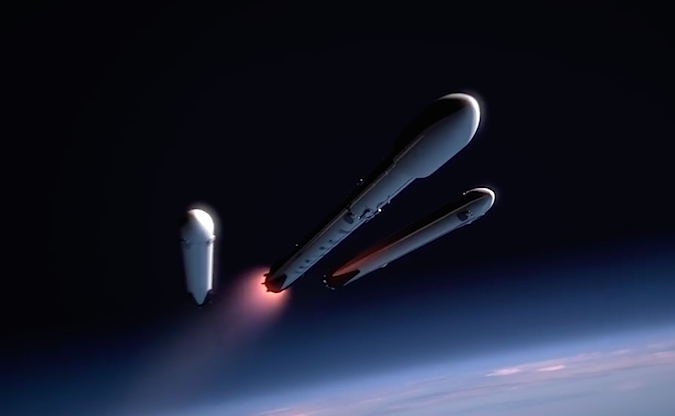
Musk’s tweet left open the question of whether the Roadster would enter orbit around the red planet, or fly to the distance of Mars’ orbit, perhaps for a flyby. In order to insert itself into orbit around Mars, the car would need a rocket pack to slow down for capture by Martian gravity.
Ideal Mars launch opportunities only come once every 26 months, when space probes can make the journey in less than a year. The next Mars launch window opens in the spring.
Launching at another time does not preclude a trip to Mars, although the payload would have to take a longer route, or use a lot more fuel to bend its trajectory and shorten the voyage.
According to Syfy Wire, Musk told blogger Phil Plait that the Roadster would launch into a “a precessing Earth-Mars elliptical orbit around the sun.”
“What he means by this is what’s sometimes called a Hohmann transfer orbit, an orbit around the Sun that takes it as close to the Sun as Earth and as far out as Mars,” Plait wrote.
Three rocket boosters based on the Falcon 9 rocket’s first stage will power the Falcon Heavy rocket toward space, delivering 5.1 million pounds of thrust from 27 Merlin 1D main engines. Technicians are preparing hardware for the maiden Falcon Heavy launch inside SpaceX’s hangar at launch pad 39A at NASA’s Kennedy Space Center in Florida, where Apollo moon missions and space shuttles lifted off.
“Falcon Heavy to launch next month from Apollo 11 pad at the Cape,” Musk tweeted Friday night. “Will have double thrust of next largest rocket. Guaranteed to be exciting, one way or another.”
SpaceX needs the Falcon Heavy to loft the heaviest satellites for commercial and U.S. military customers. It could also hurl large clusters of lighter satellites into orbit to build out new broadband communications networks.
Musk unveiled the Falcon Heavy rocket in 2011, and proclaimed then the launcher would be ready for blastoff in 2013. SpaceX said it slowed development of the Falcon Heavy to focus on other projects, including the recovery of Falcon 9 rocket stages for reuse, and to resolve technical problems that destroyed two Falcon 9 rockets in 2015 and 2016, one in flight and another on the launch pad.
If the Roadster reaches Mars, it would be the first SpaceX payload to visit another planet.
Musk announced in September his updated vision for settling Mars, and announced that SpaceX is working on a giant new rocket dubbed the BFR that could send cargo and crew ships to the red planet, or perhaps the moon if a lunar base becomes reality.
SpaceX previously planned to dispatch a “Red Dragon” capsule to land on Mars in 2020, but that project was canceled in favor of the larger BFR initiative, which Musk claimed could be ready as soon as 2024, a goal he admitted was “aspirational.”
Email the author.
Follow Stephen Clark on Twitter: @StephenClark1.

